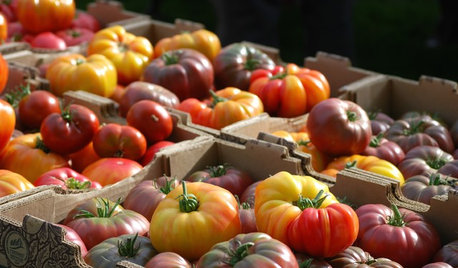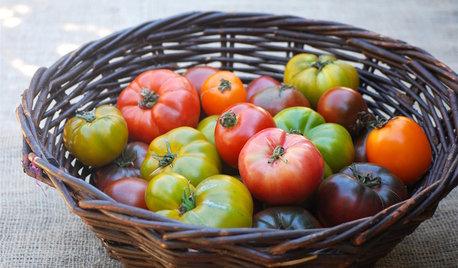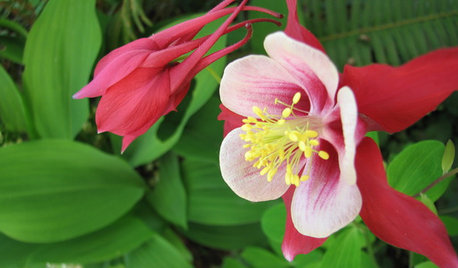Hybrid tomatoes: who are the parents: Juliet & Sweet and Neat Yellow
HU-574702010
3 years ago
last modified: 3 years ago
Related Stories

SUMMER GARDENINGNew Heirloom Tomato Hybrids Offer the Best of Both Worlds
These crosses combine great heirloom tomato flavor with increased productivity and disease resistance
Full Story
EDIBLE GARDENSSummer Crops: How to Grow Tomatoes
Plant tomato seedlings in spring for one of the best tastes of summer, fresh from your backyard
Full Story
EDIBLE GARDENS10 Delicious Heirloom Tomatoes to Grow This Summer
Irresistible heirlooms offer outstanding flavor and variety. Choose from a rainbow of colors in all shapes and sizes
Full Story
FRUIT TREESHow to Grow Your Own Persimmons
Sturdy and easy to care for, these trees offer bright fruit through winter — and keeping them in bounds is no sweat
Full Story
GARDENING FOR BUTTERFLIESGreat Design Plant: Columbine Grows Happily in Shade and Sun
Its ethereal beauty comes from complex forms and wide-ranging colors, but columbine’s benefits are highly attractive too
Full Story
DECORATING GUIDESFrom Queasy Colors to Killer Tables: Your Worst Decorating Mistakes
Houzzers spill the beans about buying blunders, painting problems and DIY disasters
Full Story
FLOWERSRudbeckia Mania: Go Beyond Black-Eyed Susan in the Garden
Branch out from typical nursery fare, with lesser-known Rudbeckia species that have delightfully unexpected features
Full Story
EDIBLE GARDENSGarden BFFs? Why Your Vegetables Are Begging for Companion Plants
Foster friendships among plants for protection from pests, pollination support and color camaraderie
Full Story
DECORATING GUIDES7 Tips to Sell Your Home Faster to a Younger Buyer
Draw today's home buyers by appealing to their tastes, with these guidelines from an expert decorator
Full Story
DECLUTTERING10 Decluttering Projects You Can Do in 15 Minutes or Less
Try these ideas to get organized at home one small step at a time
Full StoryMore Discussions







Mokinu
HU-574702010Original Author
Related Professionals
Costa Mesa Landscape Contractors · Goldenrod Landscape Contractors · Layton Decks, Patios & Outdoor Enclosures · Westwood Landscape Contractors · Sunnyvale Carpenters · Lincolnwood Fence Contractors · Salt Lake City Fence Contractors · Glendora Landscape Architects & Landscape Designers · Suffern Landscape Architects & Landscape Designers · Brooklyn Park Landscape Contractors · Golden Landscape Contractors · Parkland Landscape Contractors · Pomona Landscape Contractors · Signal Hill General Contractors · Joppatowne General ContractorsMokinu
HU-574702010Original Author
Mokinu
Mokinu
Mokinu
Mokinu
Mokinu
HU-574702010Original Author